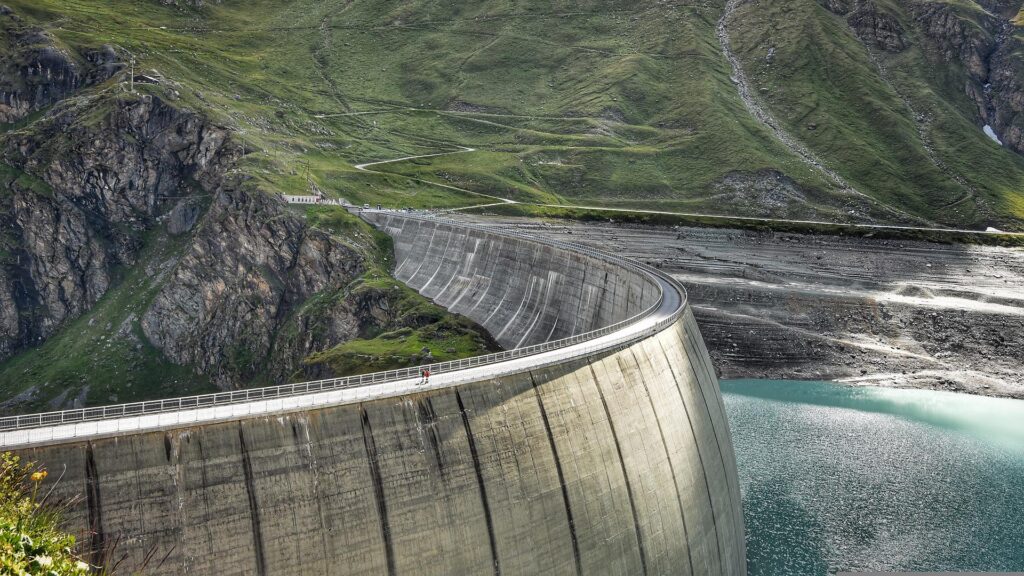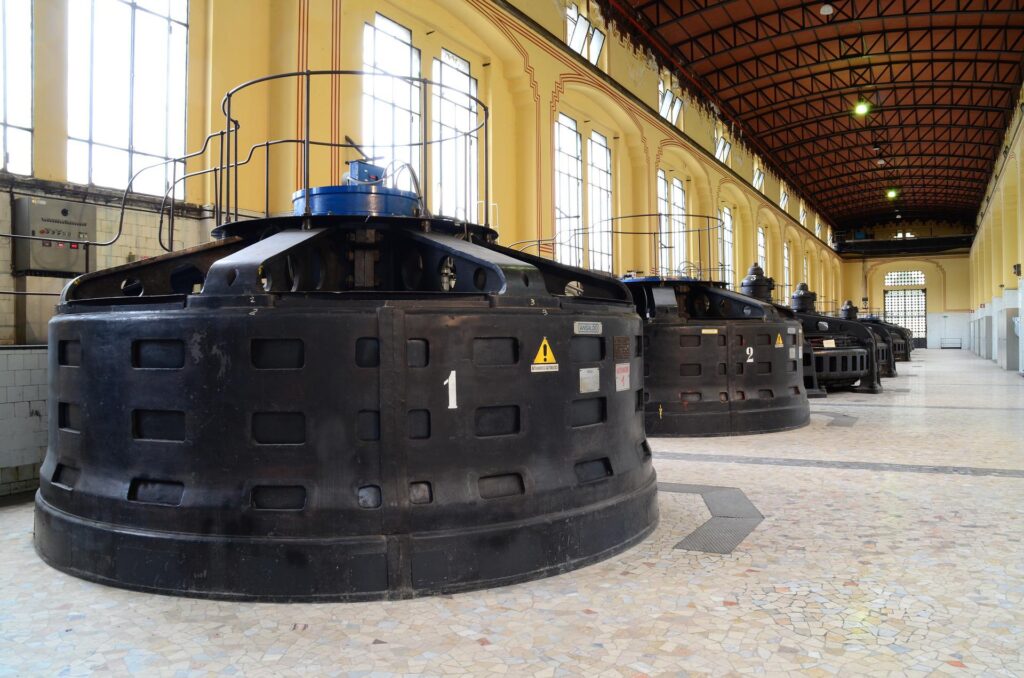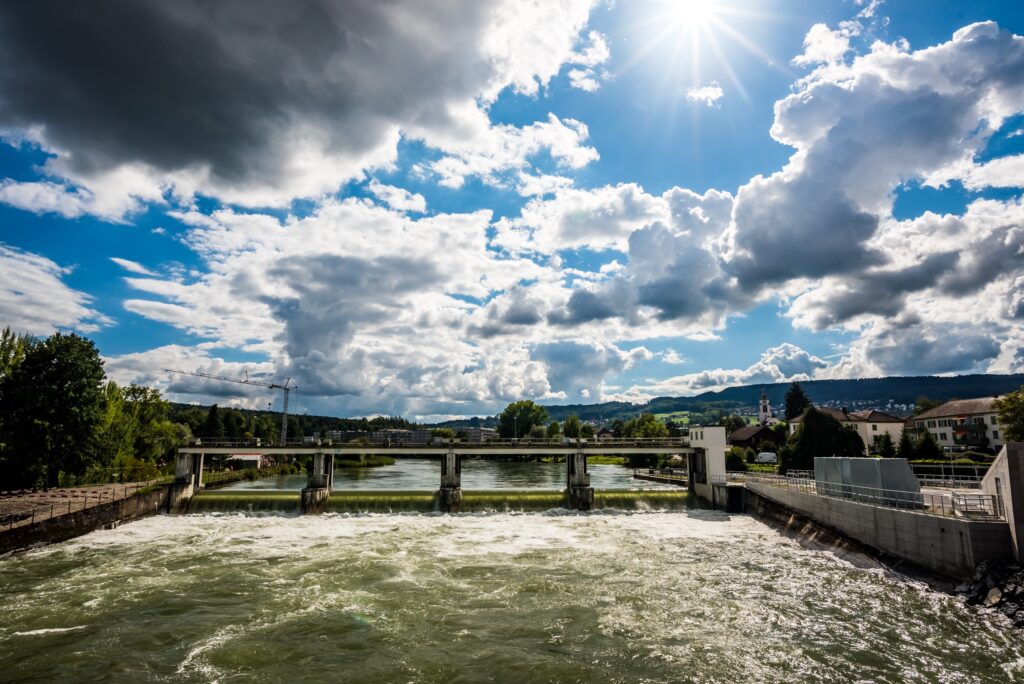Hydropower in Switzerland
Hydropower is one of the world’s oldest energy sources, and is capable of generating electricity efficiently and with low environmental and climate impact. On 1 January 2022, Switzerland had 682 hydropower plants with an output of more than 300 kW in operation. With the commissioning of new plants and the renewal of existing ones, the maximum available output increased by 18 MW.

In Switzerland there are run-of-river hydroelectric power stations (mainly consisting of a dam system in a watercourse, such as river hydroelectric power stations), storage hydroelectric power stations (hydroelectric power stations with natural or artificial water reservoirs) and pumped storage hydroelectric power stations (characterised by two water reservoirs at different levels, such as the Grimsel Pass plant).
The expected energy production of hydroelectric power stations with a capacity of 300 kW or more in 2021 was 37 172 GWh/a compared to 36 741 GWh/a in the previous year.
Around 63 % of this energy comes from the mountain cantons of Uri, Graubünden, Ticino and Valais. Significant quantities of hydropower are also produced in the cantons of Aargau and Berne. Approximately 11 % of Swiss hydropower comes from bi-national plants located along border waterways.
Switzerland’s long-term climate strategy
Water power

Energy Strategy 2050
With its Energy Strategy 2050, the federal government aims to increase average annual electricity production from hydropower to 38,600 gigawatt hours (GWh/a) by 2050 (37,400 GWh/a by 2035). In order to exploit the potential that can be realised, existing power stations will have to be modernised and expanded on the one hand, and new hydropower plants will have to be built on the other, while respecting the principles of environmental protection. The federal government wants to harness hydropower through various measures to be implemented as part of the first package of measures in the Energy Strategy 2050.In this respect, the cost-covering feed-in remuneration for new hydroelectric power stations with a capacity of up to 10 MW and the planned investments in the modernisation and expansion of hydroelectric power stations with a capacity of up to 10 MW are appropriate instruments.In addition, various measures are planned to improve the framework conditions for hydroelectric power (national interest, strategy for the expansion of renewable energies, simplification of authorisation procedures) as well as support measures under the SwitzerlandEnergy programme.
Scope and indicators of the monitoring system
The monitoring tracks developments against the benchmarks defined in the Energy Act for energy and electricity consumption per capita as well as against the benchmarks for increasing electricity production from new renewable energies and hydroelectric power plants. Other areas of monitoring and indicators describe grid development, security of supply, expenditure and prices, CO2 emissions in the energy sector, research and technology, and the international context.
Each year, the most important indicators are included in the summary version of the monitoring report. Further indicators are contained in the detailed version of the document. In addition, every five years the Federal Council submits a report to Parliament with more in-depth analyses and an energy policy balance sheet.

A silver coin
With the 20-franc silver coin “Hydropower”, issued on 9 September 2021, Swissmint is supporting renewable energies and the use of sustainable resources. This is the first coin in Switzerland to be issued in colour and with fluorescent elements that glow in the dark.
The new 20-franc silver coin in colour and with fluorescent elements is a creation of Swissmint engraver Benjamin Löbbert and is available as a limited edition exclusively in a mirror background from the Swissmintshop, some coin dealers and banks.
2021- Official commemorative coin 2021 Hydropower

Source: http://www.bfe.admin.ch





